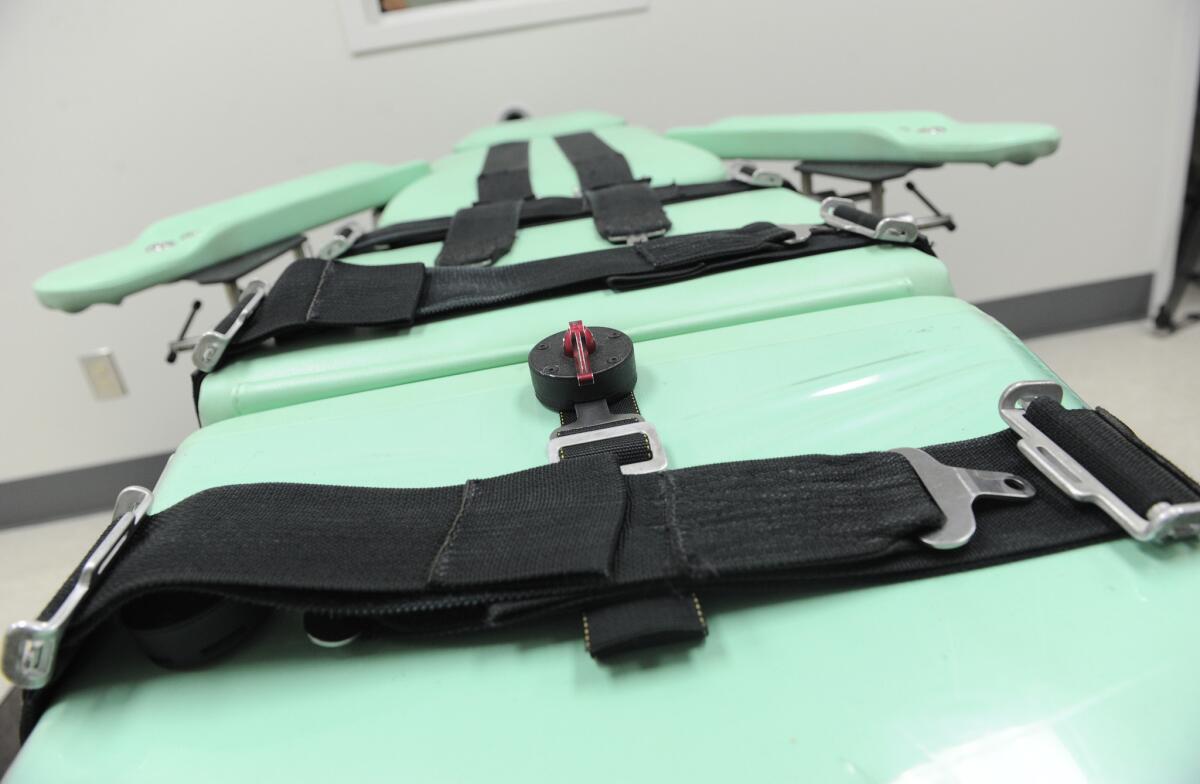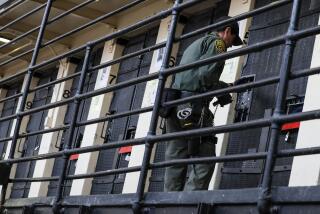Opinion: The real reasons California’s death penalty system is so slow

- Share via
A popular argument among the pro-death penalty crowd is that condemned murderers delay justice for years with “Hail Mary” appeals in desperate attempts to evade execution. But what Wednesday’s court decision by federal judge Cormac J. Carney makes clear is that, at least in California, the delays aren’t caused by those trying to stave off execution. They are caused primarily by the state itself. And seeing how many condemned prisoners eventually win reprieves from federal judges, those delays are a good thing.
The ruling by Carney, who found California’s administration of the death penalty to be unconstitutional, is here, and you should read it. It’s succinct, with a minimum of the kind of dense legal language that can make some decisions read like they were written in code.
Carney relates the tortured history of the death penalty in California since 1978, when the current system was adopted, and notes that the California Constitution requires that any death penalty be reviewed by the state Supreme Court. The state provides legal counsel to make that presentation, since the death penalty defendants are almost exclusively penniless by that point in the process. The law requires the lawyer must have at least four years active experience and have dealt with felony appeals. Plenty of those around. But the state hasn’t budgeted nearly enough money to hire them. And that’s where the delays begin.
Below is a timeline pieced together from Carney’s ruling. And he notes, as do I, that these delays have lengthened in recent years, but aren’t new. After four years of review, the California Commission on Fair Administration of Justice pointed out the problems in 2008, and other reports have critiqued the structural flaws with the system. Yet the state has taken no meaningful action to fix it. Why? Maybe because it’s broken beyond repair.
- Once the death penalty has been imposed, the verdict is reviewed by the state Supreme Court. The state appoints a lawyer to represent the condemned inmate, which takes three to five years because of lack of funds to pay the lawyers, and by the low pay offered, which reduces the pool of potential lawyers. During that time, there is no action on the case.
- Once appointed, the lawyer must become versed in the details of the case, beginning with the trial transcript, which averages 9,000 pages, then prepare the legal brief and submit it. That process takes about four years.
- Then the appeal has to be scheduled by the Supreme Court, which hears a couple of dozen such cases each year, which means another delay of up to three years before the case will be reviewed and the court issues its ruling.
Altogether that’s some 12 years before the Supreme Court finishes its mandated review “with inmates spending much of that time waiting for counsel to be appointed and the oral argument to be scheduled,” Carney wrote.
If the state Supreme Court upholds the verdict and sentence, then the defendant gets the opportunity to appeal the verdict for reasons of inadequate counsel and other matters not growing out of the trial evidence itself. The law requires a different lawyer be assigned, though the defendant can waive that and stick with the lawyer he has. Again, underfunding has created a massive backlog, and defendants wait years. Over the last five years, Carney wrote, an average of 22.8 “death judgments” have been issued each year; the state has assigned lawyers in an average of 9.4 cases a year.
The delays continue through the appeals process, dragged out by overburdened court calendars. By the end, a defendant “will likely have spent a combined 17 years or more” appealing the verdict. And if he loses the state-level appeals, then he gets to make his case to the federal court system, which takes an average of 10.4 years.
So more than a quarter-century goes by before the system has done its work, presuming the state courts got it right and the federal courts affirm the verdict and sentence. But what stands out from Carney’s decision is the jarring statistic that 60% of the condemned won reprieves in the federal courts, signaling flaws in the trial or appeals process.
Key here is that the delays aren’t because of condemned men filing frivolous lawsuits drawing out arcane arguments (though some of the challenges are indeed frivolous), but because of the state’s inability to make the system work with any sort of efficiency. At the same time, there is no rhyme or reason to which defendants get processed through the system in what order, thus those who are cleared for execution are determined through an arbitrary mechanism.
Those delays, and the arbitrary application, violate the 8th Amendment’s protection against cruel and unusual punishment, Carney concluded. It’s a persuasive argument.
Yet it doesn’t end there. The state has been unable to kill anyone since a 2006 court decision that found the state’s lethal-injection protocol to be unconstitutional as well. State prison officials are working on a new protocol, but there is no timetable.
So of the more than 900 people condemned to death since 1978, when California adopted the current capital punishment system, only 13 have been executed. Another 94 died of other causes; 39 had their cases overturned by the federal courts and were not resentenced by the state. Of the 748 people on death row at the moment, only 17 are cleared for execution.
Yet those executions are on hold because of the constitutional problems with the way the state was handling the executions. And even if the state announced a new protocol today, fresh legal challenges would likely delay its implementation for years.
The death penalty, as I’ve written before, is barbaric, occasionally imposed in error, disproportionately applied to minorities and serves as neither deterrent nor retribution. As Carney writes, it is a de facto sentence of “life in prison, with the remote possibility of death” for the vast majority of those sentenced.
Let’s stop with this insane practice and the irretrievably broken system. Ban the death penalty. It is not the act of a civilized people or of a mature democracy. And it certainly does not advance the ends of justice or of society.
Follow Scott Martelle on Twitter @smartelle
More to Read
Sign up for Essential California
The most important California stories and recommendations in your inbox every morning.
You may occasionally receive promotional content from the Los Angeles Times.











